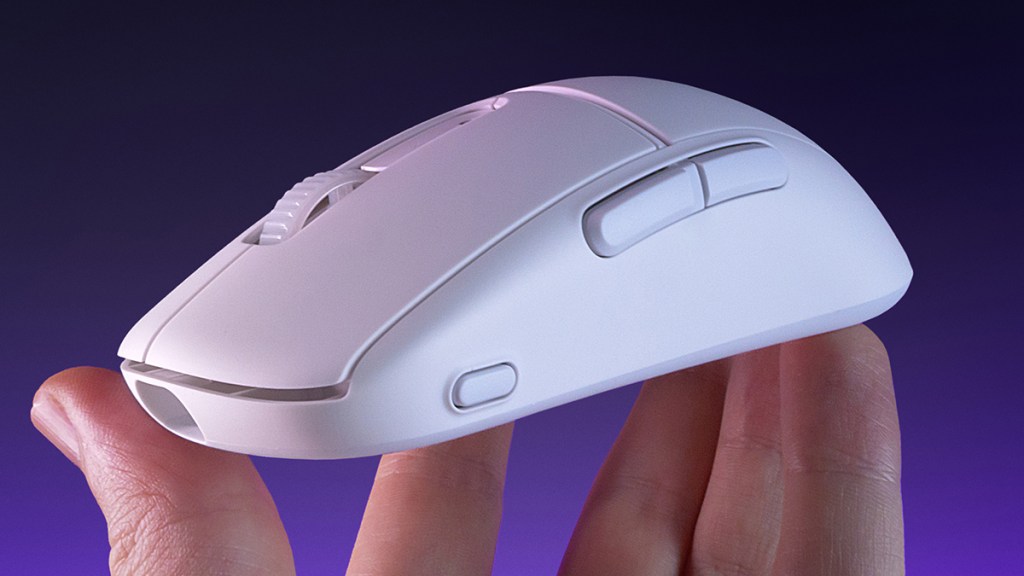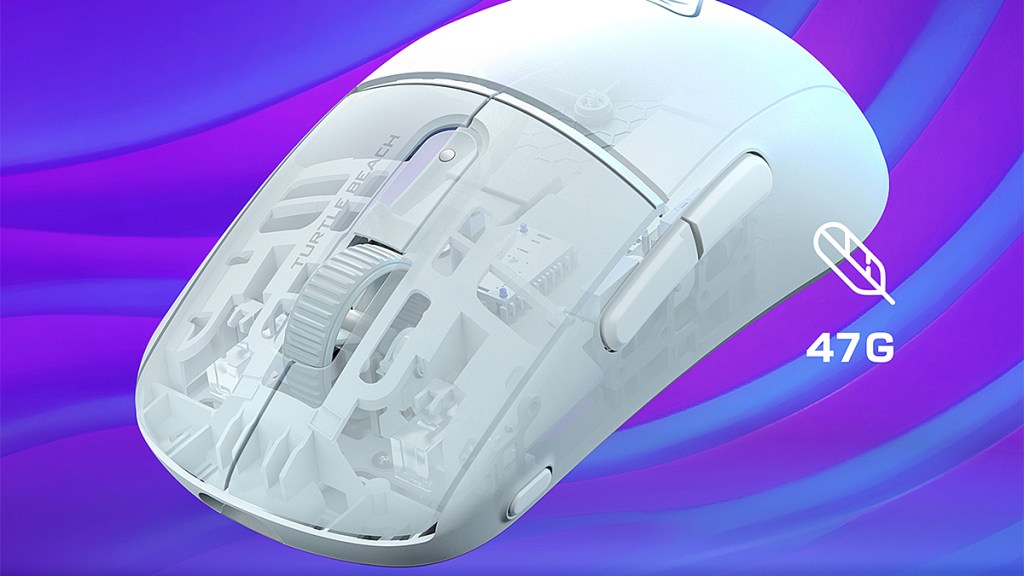I did a double-take when I first read the specs of the Turtle Beach Burst II Air gaming mouse. The obvious highlight is the 47-gram weight, the lightest I’ve seen from any mainstream peripheral company. That alone should get PC gaming enthusiasts interested, but how do the other aspects of the mouse hold up? This is my review of Turtle Beach’s latest wireless gaming mouse.
Heavy on features
Looking past the weight for a moment, the Burst II Air makes use of the Owl-Eye 26K DPI optical sensor, which translates to dependable tracking accuracy and speed. During my testing, it never faltered.
Another mention-worthy spec is the Titan Optical switch used in the Burst II Air. These are quick to respond and should last a long time, with a rating of 100 million clicks.
As for connectivity options, this mouse can pair with either the 2.4 GHz dongle for low latency or Bluetooth for longer battery life. I’m especially happy to see that the mouse has a slot for easily storing the dongle when it’s not in use.
No honeycomb here

Drawing attention back to the low weight, users might be surprised at the lack of honeycomb cut-outs. This has become the standard way that manufacturers cut weight, but Turtle Beach hasn’t resorted to that with the Burst II Air. With the honeycomb design often criticized, it’s good to see that TB found an alternative solution.
For those who want a larger area of content, additional skates are included in the box. As for what this does to the overall weight, I have found that it is negligible, so players can pick their preference without worrying about any additional heft.
The downsides

The Burst II Air’s weaknesses are unsurprising. The low weight translates to a rather flexible outer shell, though this is only really a concern for those who tend to squeeze their mouse. For those who treat their mouse with a normal amount of care, I’m confident that this mouse will stand the test of time.
The 1,000 Hz polling rate is the other downside. While I’m not fully convinced about the advantages of higher polling rates up to 8,000 Hz, some gamers are. If you’re looking for anything past 1,000 Hz, then the Burst II Pro isn’t for you.
I will also note how the shape of the Burst II Air has changed over the previous model. It’s fairly subtle, but those moving from the old version to the new may need a week or two to get used to it.
Final Verdict
At $99.99, the Turtle Beach Burst II Air delivers great value with its ultra-lightweight design and high-performance features. Its reliable sensor and responsive switches enhance the gaming experience, while the dual connectivity options offer flexibility. Though it has a few minor drawbacks, like a flexible shell and a 1,000 Hz polling rate, these don’t significantly detract from its overall appeal as a sub-$100 ultra-lightweight mouse.
Positives and Negatives
-
47 grams
-
Great sensor and switches
-
Dual connectivity for work and play
-
Additional extras in the box
-
Solid price
-
Limited to 1,000 Hz
-
Outer shell can flex with a tighter grip
Disclosure: Review sample provided by Turtle Beach.











